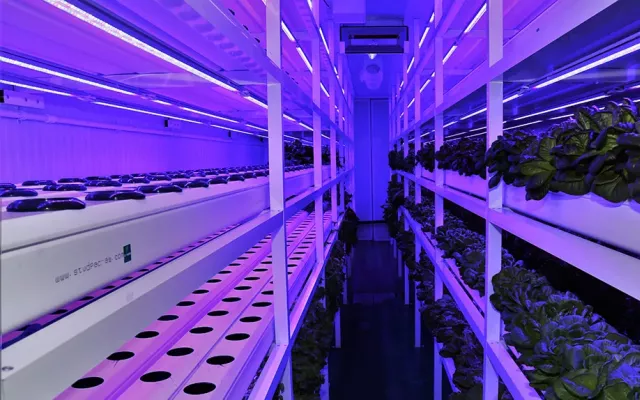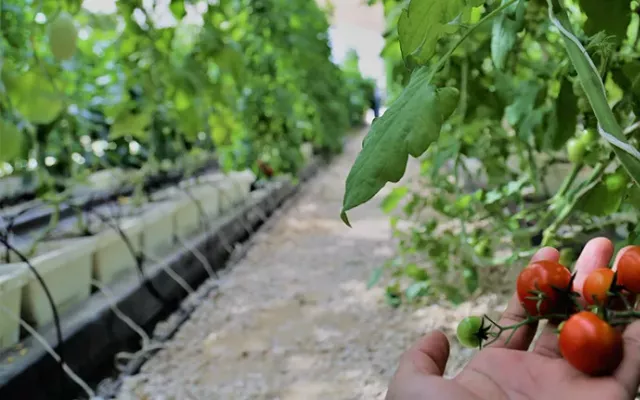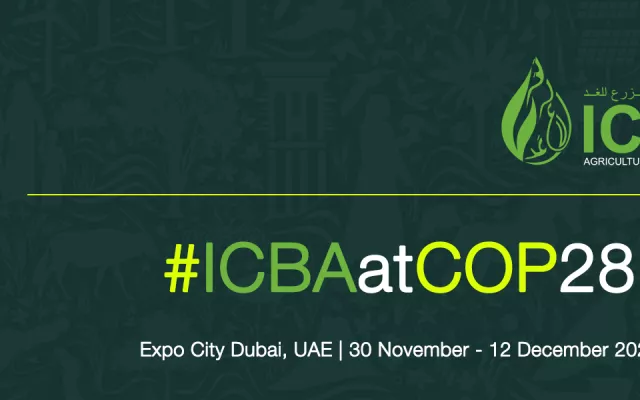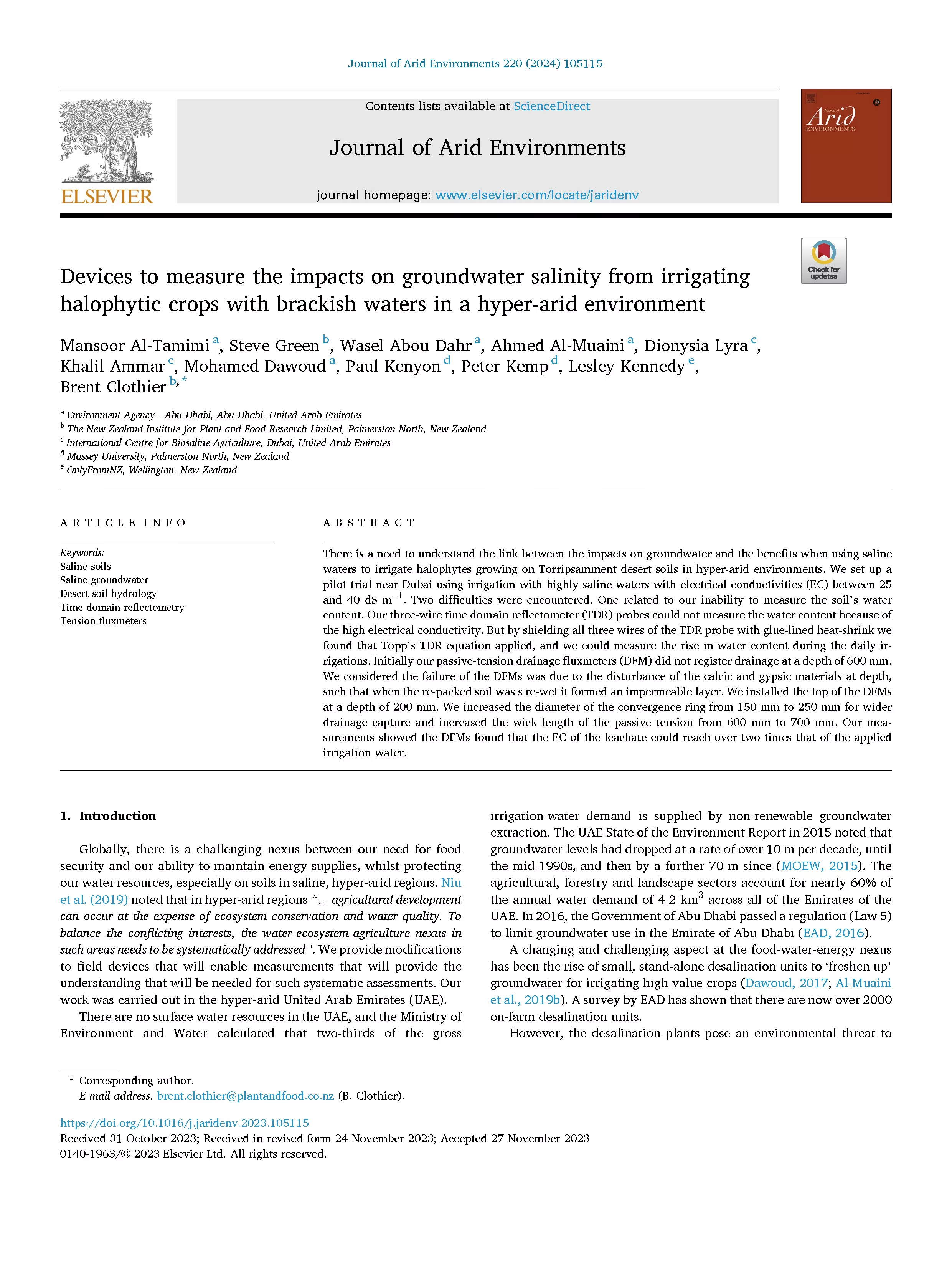Devices to measure the impacts on groundwater salinity from irrigating halophytic crops with brackish waters in a hyper-arid environment
There is a need to understand the link between the impacts on groundwater and the benefits when using saline waters to irrigate halophytes growing on Torripsamment desert soils in hyper-arid environments. We set up a pilot trial near Dubai using irrigation with highly saline waters with electrical conductivities (EC) between 25 and 40 dS m−1. Two difficulties were encountered. One related to our inability to measure the soil's water content. Our three-wire time domain reflectometer (TDR) probes could not measure the water content because of the high electrical conductivity. But by shielding all three wires of the TDR probe with glue-lined heat-shrink we found that Topp's TDR equation applied, and we could measure the rise in water content during the daily irrigations. Initially our passive-tension drainage fluxmeters (DFM) did not register drainage at a depth of 600 mm. We considered the failure of the DFMs was due to the disturbance of the calcic and gypsic materials at depth, such that when the re-packed soil was s re-wet it formed an impermeable layer. We installed the top of the DFMs at a depth of 200 mm. We increased the diameter of the convergence ring from 150 mm to 250 mm for wider drainage capture and increased the wick length of the passive tension from 600 mm to 700 mm. Our measurements showed the DFMs found that the EC of the leachate could reach over two times that of the applied irrigation water.
Year
2024
Publication Source
Journal of Arid Environments
Publication type
Scientific Paper
Volume/Chapter/Issue
220










